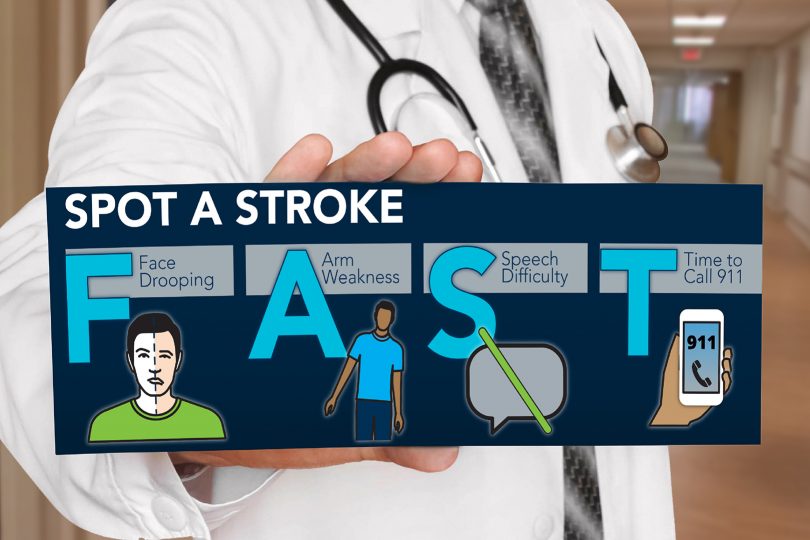Every 40 seconds, someone in America has a stroke, and about every four minutes, it claims a life. Stroke kills more than 133,000 people a year, according to the American Heart Association/American Stroke Association. It’s the second leading global cause of death, behind heart disease.
Stroke is also the leading cause of serious long-term disability in the United States, because damage to the brain can affect the entire body and its functions. Like a heart attack, a stroke is serious, because it causes more long-term disabilities than any other disease. A stroke is sometimes called a brain attack, because it is typically triggered by a clot that blocks blood flow to the brain. The brain cells in the immediate area begin to die, because they stop getting the oxygen and nutrients they need to function.
Stroke is clearly a debilitating event – that’s why we want to educate everyone on the signs and symptoms. The sooner you recognize that someone is having one, the sooner you can help them get emergency medical care. The quicker they receive help, the greater their chances of recovery.
Recognize stroke F.A.S.T.
The warning signs of stroke come on fast, and that’s a great acronym to use for learning the signs – F.A.S.T. (face, arms, speech, time).
F – Face droopy?
A – Arm weakness
S – Speech difficulty
T – Time to call 911
The window of opportunity to start treating stroke patients is three hours, but to be evaluated as to the most appropriate stroke treatment, patients need to get to the hospital as soon as possible. Following the steps below is critical in order to achieve the best outcome possible:
- Know the warning signs (F.A.S.T.)
- Call 911 immediately
- Get to a hospital





